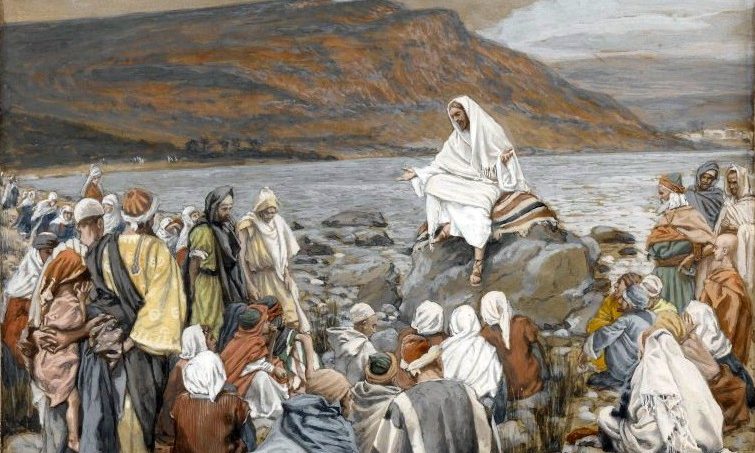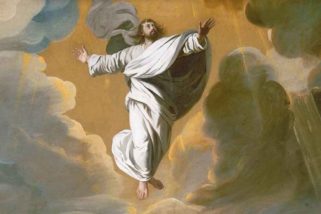It has been observed since the mid-20th century that the earliest Synoptic Gospel, Mark, follows the framework of Greco-Roman tragedy. The first attention I can find paid to this topic was in 1977, in Bilezikian’s The Liberated Gospel and some 24 years earlier in the same author’s doctoral dissertation.
The pattern is quite clear: sparse dialog, frequent scene changes, narration, passion. I recommend Ken Humphreys’ Youtube video on this topic as an introduction.
Picture this: you are a late 1st or early 2nd century mystery cult member. The mystery to which you belong, the Christian mystery, is more compatible with your worldview than other mysteries; those other mysteries (and their Demigods) lack the personal touch your mystery touts. You regularly meet with other members of your local mystery community, and you are aware of, by name or reputation, prominent members of surrounding communities.
Many Christians are slaves…maybe you are too. The drudgery of life is interrupted by your daily morning routine of worshiping toward the sun. Amplifying your woes, if you’re caught, you’ll either be whipped, imprisoned or killed.
Then the news comes! The most famous proprietor of this mystery — the man who saunters around the Eastern Roman empire sharing the Good News, with sheer disregard for his own tremendous risk — is coming to your town, in Bythnia in Roman Asia, the geographic space known today as central Turkey.
This regional celebrity has developed his system well: he goes from town-to-town, with props, wardrobe changes, and a crew of about a half dozen others. In this sense, the celebrity is borrowing a well-developed trope within the mystery schools. Dramatic depictions were common in the mysteries.
His most notable compatriot is an unexpectedly high-ranking woman in the mystery who simultaneously identifies as the archetypal mother and wife. She goes by multiple names, including Helen and Mary.
The charismatic leader makes curious claims, such as remembering previous lives and experiences in higher realms (Against Heresies i.25.1, i.25.4, Galatians 4:19). He claims to have been born under odd circumstances, a miscarriage (1 Corinthians 15:7-8). He also claims to possess a special spirit (1 Corinthians 2:12) which gives him amplified power of proselytization. He usually brings a several-hundred word letter addressed to members of the community. At some point during his stay, with his band of co-conspirators (and some local community involvement), he enacts a dramatic depiction which culminates in the crucifixion of one of the featured players – not him, though.

There is a feature in the play that did not translate to canonical paper. To the audience members, the point could not be clearer.
A little past the midpoint of the play (Mark 9:35-40), one of Jesus’s apostles comes to him and complains that an unnamed person was casting out demons! New proselytes watching the play wonder “how could that be?” Some minutes earlier, the play’s narration made it clear that it was only through Jesus Christ’s authority that his apostles could cast out demons (Mark 3:14-15).
Despite the snitching apostle not giving specifics about him, senior members in the audience immediately recognize this unrevealed, unnamed demon-caster. The new initiates soon will too.
The characters in (and absent from) the scene, coupled with the audience’s intuition, eventually makes it clear who this unnamed ally is. For added effect, Jesus assures his worried apostle that this anomalous wizard is on the straight-and-narrow (Mark 9:40).
The Gospel text eventually gives the name and face of the Jesus-sanctioned magician, but the epiphany rendered to the audience is lost when translated to text, which lacks relevant stage directions.
The real star of the show, Simon (who went by at least one other name), had arrived in town with pomp and circumstance. He is bombastic, educated in Alexandrian traditions. He is a populist, but he operates with Aristocratic certainty – well funded, but pretends he is not.
Simon plays several non-speaking roles, including that of a leper (Mark 14:3) in a scene which had Simon’s partner, Helen, anointing Jesus with expensive perfume (Mark 14:3-4), and Jesus rebuking his apostles for complaining about her frivolous wastefulness – an accusation Simon was often forced to address himself (Galatians 2:10) in real life. Jesus’s rebuke was necessary, because the waste was required to confirm Jesus was the Christ – the Anointed. This put Helen into the unique apostolic position of amplifying Jesus’s Christ-hood. It also reminded the audience that Helen should be praised by them and across all nations (Mark 14:9).

A few scenes later, Simon shows up just in time to let the audience know who the new sheriff in town was — he was the recipient of the Christ Spirit before Jesus was crucified (Mark 15:34). Simon is front-and-center in the most excruciating moment of Jesus’s life – arguably the most important scene in the play. The metaphor conveyed to audience members rings clear as a bell: Simon bears Jesus Christ’s cross! (Galatians 6:14, Mark 15:21) Simon is the Paraclete: the new Christ.
Simon’s cross-bearing scene means different things to different audience members. To the new proselytes, Simon’s role as the heroic cross-bearer, plucked from his otherwise unassuming role planting seeds in the field, demonstrates how Simon received the Spirit emanating from the higher heaven while aiding the dying Jesus against his Roman oppressors. More senior initiates recognize the field as the “New Jerusalem” (2 Esdras 10, Revelation 21:2), where marginalized Diaspora Jews could make pilgrimages in the absence of a safe and unadulterated Original Jerusalem.
For those deeply initiated in the mystery, Simon’s role is more robust, because they recognize the dramatic invocation of several features of the mystery:
- The reference to historical events decades earlier makes it clear that these “heads of the church (ekklesia)” who put on the drama were acting as their previous incarnations on earth. How else could someone operating in the late 1st or early 2nd century be so keenly aware of events occurring in the early 1st century? Simon’s soul had migrated from one body to another so he could bring this community the Good News.
- Alternatively, for full initiates, these events did not even occur on Earth; rather, they were in the realm above, a well-developed trope in the Jewish Diaspora, and certainly something early Christians would have been aware of. Simon’s play demonstrates his perfect memory of the events in this realm.
Simon’s chief compatriot, Helen, says she is from Tyre (Mark 7:24-30, Against Heresies i.23), and in one scene begs Jesus to exorcise demons from her daughter. Jesus is reluctant, but how can he deny the desperate pleas of such a grief-stricken woman? She is Mary Magdalene in other scenes. Like the character she plays, her real life persona has her former profession as a prostitute. Like Simon, Helen had lived multiple lives, including that of Helen of Troy. She is the female incarnation of the Paraclete.
Simon was not the only traveling leader in the Christian mystery, but he was the most traveled. There were dozens of leaders who employed Simon’s format. A tense symbiosis existed between he and other leaders (1 Corinthians 3:3-6, Galatians 1:8, 2 Corinthians 11:4). Those leaders went by various names, including Cephas, Apollos, Cerinthus, Theudas, Dositheus, Menander, and John. John’s claim to fame was reliance on water tricks and magic associated with baptism. After John died, Theudas (AKA Theodosius, Dositheus) took up his mandate. For a time after John’s death, tensions were high between Simon and Dositheus; some even claimed Simon killed Dositheus, a claim which would help to mar Simon’s name forever (Recognitions xi).
Simon conveyed his esteem (or lack thereof) for other leaders in the community via his treatment of them in the production. John, for instance, was treated well (Mark 1:4). Cephas, not so much (Mark 8:33).
Hiding beneath the spectacle and festivities, a reality was becoming clear to Simon and his band. Simon’s time as undisputed leader of the church was nearing its end. His abrasive bombast, coupled with a staunch resistance to recognize any of the other leaders as his peers (Galatians 2:6), made him wildly unpopular with others in power.
This tense symbiosis, which these leaders configured, devolved into treachery (Galatians 2:11). Competing gospels were constructed which minimized Simon’s backstory and role in “the field” (Matthew 27:32).
As Christianity gained traction within the empire, dramatic depictions and other artifacts of its mystery origins gave way to a more Orthodox routine. Rome occasionally picked winners in the mystery game, and Christianity was about to score a big victory after other leaders crafted a slew of apologies to cast specific Christian sects in a carefully curated light. Simon’s Gospel was converted from a play into literature and subsequently embellished. The role of the unnamed demon-caster was demoted – Jesus would say he never knew him (Matthew 7:21-23). Additionally, the central tenet of Simon’s Gospel, which is to say an alternate to Mosaic law, would likewise make Simon the least in the kingdom (Matthew 5:19).
Simon tried and failed to recapture the power which gradually slipped out of his control (Galatians 3:1). He changed his name and address. Students tried to restore their teacher’s former glory. One student paid the “church” 200,000 sesterces to put his teacher’s theology back in the forefront of the church – for a time, the student was successful, until letters to the emperor undid his efforts. The old tricks did not work anymore. A new Orthodoxy was on the rise.



